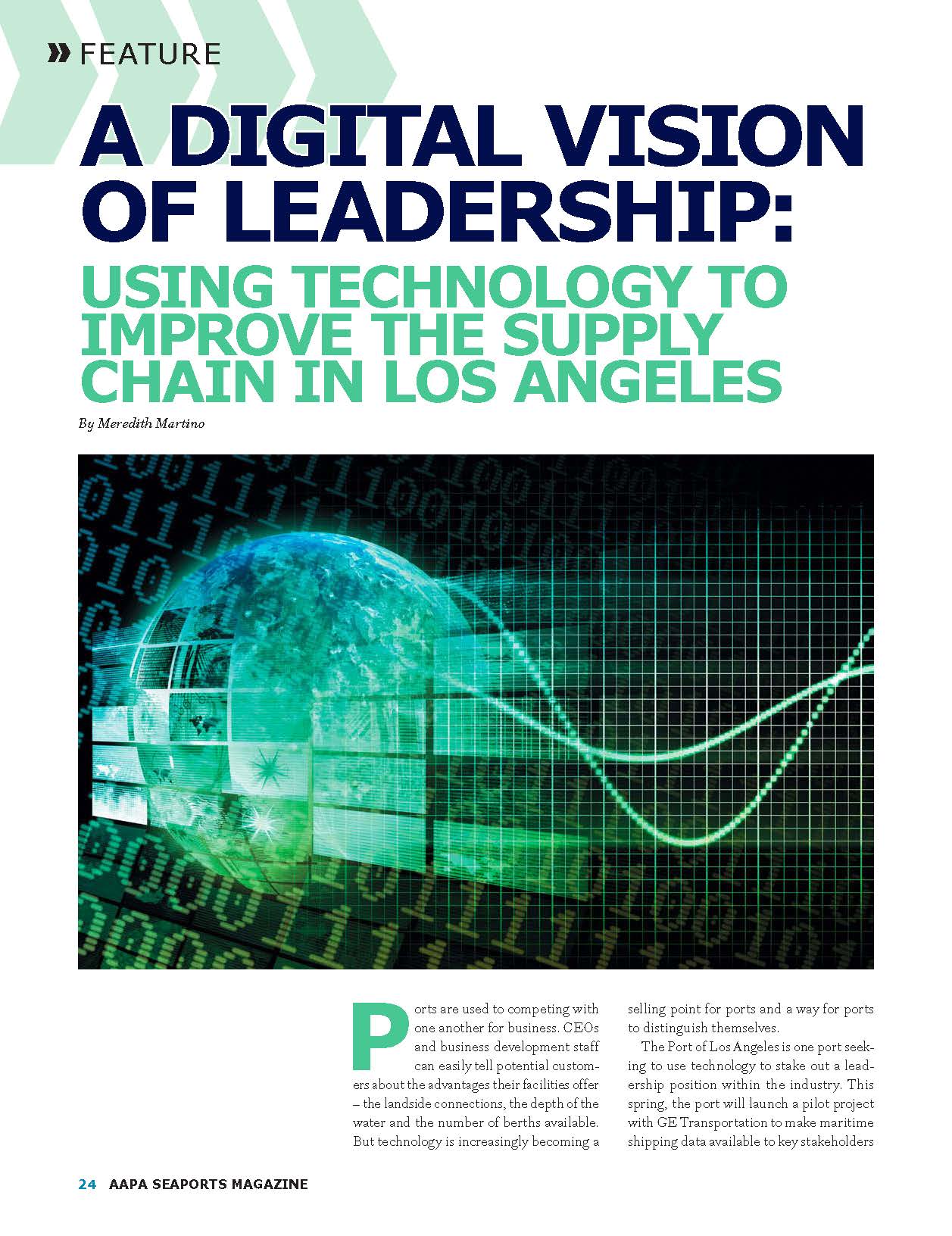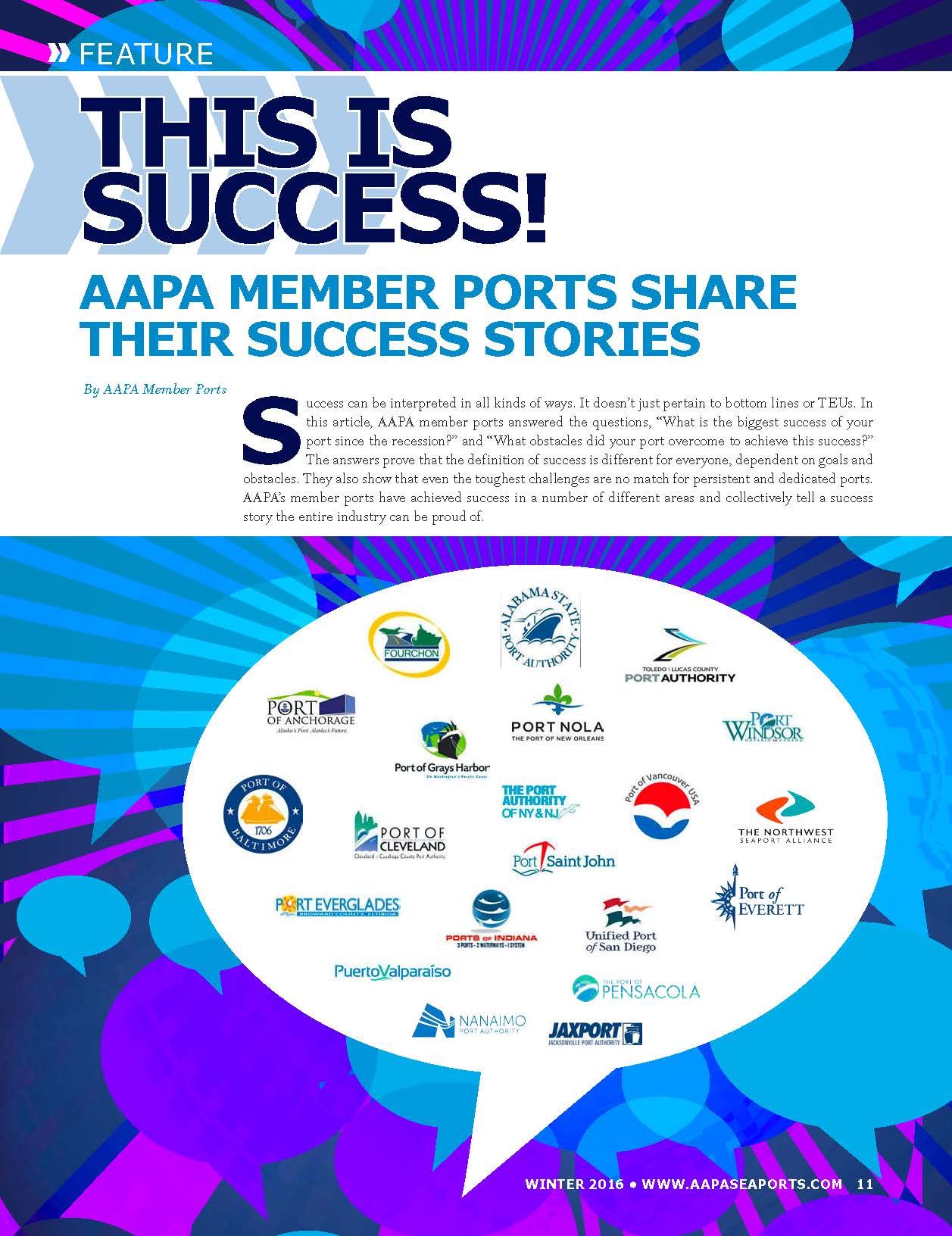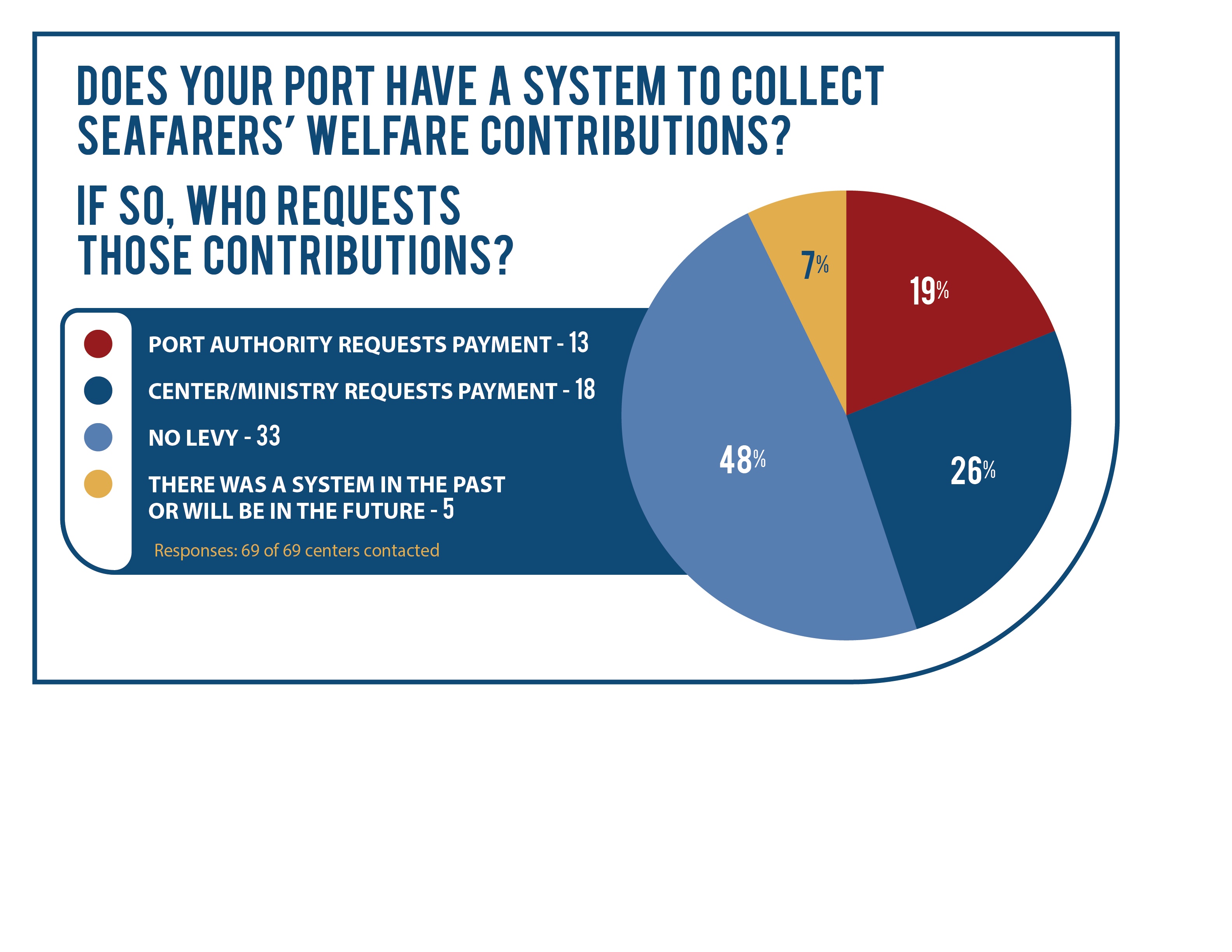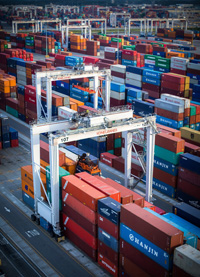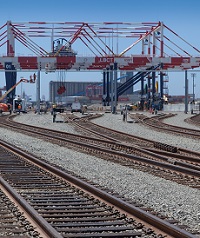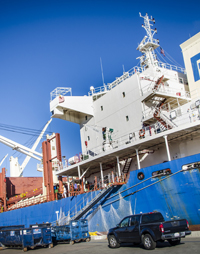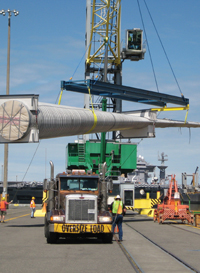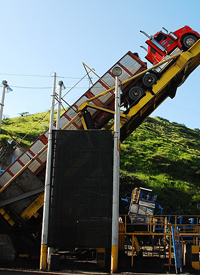By Meredith Martino A DIGITAL VISION OF LEADERSHIP: USING TECHNOLOGY TO IMPROVE THE SUPPLY CHAIN IN LOS ANGELES Ports are used to competing with one another for business. CEOs and business development staff can easily tell potential customers about the advantages their facilities offer – the landside connections, the depth of the water and the number of berths available. But technology ...
Read More »Key Topics
This Is Success! AAPA Member Ports Share Their Success Stories
Success can be interpreted in all kinds of ways. It doesn’t just pertain to bottom lines or TEUs or crane capacity. In this article, AAPA member ports answered the questions: What is the biggest success of your port since the recession? What obstacles did your port overcome to achieve this success? The answers prove that the definition of success is ...
Read More »PORTS + POLITICS: Inclusion of Ports in Our National Transportation System
After eight years in office, the nation is seeing the results of the Obama Administration’s prioritization of maritime ports. The bottom line? Fifty-six port infrastructure grants representing nearly $1.6 billion in port investment are either completed or are presently underway. Read more… By Paul “Chip” N. Jaenichen, Maritime Administrator
Read More »GUEST ARTICLE: Shipping Contributions to Seafarers’ Welfare
In the beginning of 2016, Michael Skaggs, NAMMA’s Director of Programs, began exploring port levies and voluntary contributions for seafarers’ welfare. The research results point to a stark financial future for seafarers’ welfare providers without the active support of port authorities. Read more… Dr. Jason Zuidema, Executive Director, NAMMA
Read More »Seaports Congestion and Cargo Movements
Seaports Congestion and Cargo Movements By Kathy A. Smith Port productivity and congestion are major areas of concern throughout the shipping industry that can be influenced by a variety of factors. And although ports face the ever-changing dynamics of balancing today’s capital expenditures against possible future profits, how ports approach the issues at play depends on their unique set of ...
Read More »The Future of Automation
The Future of Automation By Sandy Smith Everywhere one turns, industries are facing automation. Robots, artificial intelligence, driverless vehicles. Ports will be changing as well. But as the next wave of technological revolution looms, ports are slowly looking at ways to automate — without getting too far ahead of the technology. “We look at some of the technology evolutions to ...
Read More »Port Cooperation: In the Name of Productivity
Port Cooperation: In the Name of Productivity By Lori Musser Fiercely competitive at most times, seaports have been known to mine each other’s cargo and passengers, tenants and terminal operators, and even employees. They do come together to learn and to share best practices in some functional areas, and to speak in unison to legislators and regulators. What they rarely ...
Read More »Strategy at Seaports Is Key to Handling Capacity Challenges
Strategy at Seaports Is Key to Handling Capacity Challenges By Candace Gibson On any given day, the hustle and bustle of a seaport is devoted to the purpose of bringing in vessels, loading and unloading cargo/passengers, provisioning the vehicle and getting those vessels back out to sea as quickly as possible. The premise sounds simple enough, but providing sufficient capacity ...
Read More »Thinking Outside the Box: Productivity at Non-Container Ports
Thinking Outside the Box: Productivity at Non-Container Ports By Meredith Martino TEUs. It’s hard to have a discussion about port productivity without using the word. The short-hand description of containerized cargo is one of the measurements that denotes the size of a vessel or the cargo throughput of a port. Cross TEUs with time, and the metric becomes the default description ...
Read More »Latin America’s Proactive Approach: Inventive Ideas Increase Non-Container Productivity
Latin America’s Proactive Approach Inventive Ideas Increase Non-Container Productivity By Tom Hranac In a region traditionally dependent on exporting commodities, depressed commodity prices, a stronger dollar and weaker global demand have caused an economic downturn in many parts of Latin America. Although it is not surprising that the region’s ports may have difficulties maintaining their non-containerized cargoes in these conditions, ...
Read More » AAPA Seaports
AAPA Seaports
